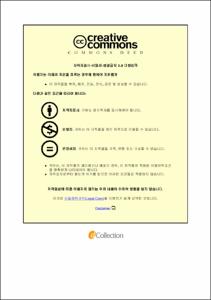Fermentation of Nile tilapia (Oreochromis niloticus) wastes using Lactobacillus plantarum for the production of lactic acid and fertilizer
- Alternative Title
- 젖산과 비료를 생산하기 위한 Lactobacillus plantarum을 이용한 나일 틸라피아(Oreochromis niloticus) 폐기물의 발효
- Abstract
- The waste (heads, bones, skin, scales, fins and guts) of Tilapia (Oreochromis niloticus) was hydrolyzed by concentrated H2SO4 acid, and then the supernatant was obtained after centrifugation and filtration. The supernatant was divided to three samples. First sample, only the acid-hydrolyzed Nile tilapia fish wastes supernatant, second sample the acid-hydrolyzed Nile tilapia fish wastes supernatant including 1% glucose and the third sample which was the acid-hydrolyzed Nile tilapia fish wastes supernatant including 2% glucose. After that, the samples were inoculated with Lactobacillus plantarum bacteria and incubated at 30˚C. For the analysis, four parameters were tested every eight hours. These parameters were pH, lactic acid concentration, glucose concentration and the growth of bacteria. The results of the study indicated that the productivity of lactic acid in the first sample was not effective 5.5 g/l but those in second and third sample were 12.28g/L. and 16.1 g/L. respectively. In addition the results showed that the bacterial growth in the second sample was much higher than the other samples. For the germination test and fertilizing ability test, the pH of the fermented broth was equalized by adding 1M NaOH and diluted by distilled water to reduce the salinity to 10, 6 and 3‰. The best results were obtained from the diluted solutions at both 3 and 10‰ salinities as the GI% were 95 and 75 respectively. According to the results of the germination test, a hydroponic culture system was held using barley seeds to study the fertilizing ability of the final fermented broth. The diluted solution at 10‰ salinity was used against distilled water as a control. The results showed that the stem length of barley was 10.3 cm after 10 days culture on the diluted fermented broth, which was better than that (8.7 cm) of the control.
- Issued Date
- 2016
- Awarded Date
- 2016. 2
- Type
- Dissertation
- Publisher
- 부경대학교 글로벌수산대학원
- Affiliation
- 부경대학교 글로벌수산대학원
- Department
- 글로벌수산대학원 국제수산과학협동과정
- Advisor
- 김중균
- Table Of Contents
- Tables of contents i
List of Figures iii
List of Tables iv
Abstract v
1. Introduction 1
2. Materials and Methods 5
2.1. Microorganism 5
2.2. Target fish 8
2.3. Fish waste 9
2.4. Fermentation medium 9
2.5. Recovering microorganisms 11
2.6. Culture conditions 11
2.7. Acid hydrolysis 13
2.8. Analysis 17
2.9. Seed Germination test 20
2.10. Hydroponic culture system 21
3. Results 23
3.1. The fermented Nile tilapia wastes supernatant 23
3.2. The fermented Nile tilapia wastes supernatant including 1% glucose 25
3.3. The fermented Nile tilapia wastes supernatant including 2% glucose 28
3.4. Comparison with other low-cost medium for different species 30
3.5. Seed germination test results 32
3.6. Fertilizing ability 33
4. Discussion 34
4.1. The acid-hydrolysis 34
4.2. The microorganism 34
4.3. The lactic acid production 35
4.4. The effect of the fermentation temperature 36
4.5. The fertilizing ability 37
5. References 39
6. Acknowledgements 44
- Degree
- Master
- Appears in Collections:
- 글로벌수산대학원 > 국제수산과학협동과정
- Files in This Item:
-
-
Download
 Fermentation of Nile tilapia (Oreochromis niloticus) wastes using Lactobacillus plantarum for the pr.pdf
기타 데이터 / 2.66 MB / Adobe PDF
Fermentation of Nile tilapia (Oreochromis niloticus) wastes using Lactobacillus plantarum for the pr.pdf
기타 데이터 / 2.66 MB / Adobe PDF
-
Items in Repository are protected by copyright, with all rights reserved, unless otherwise indicated.